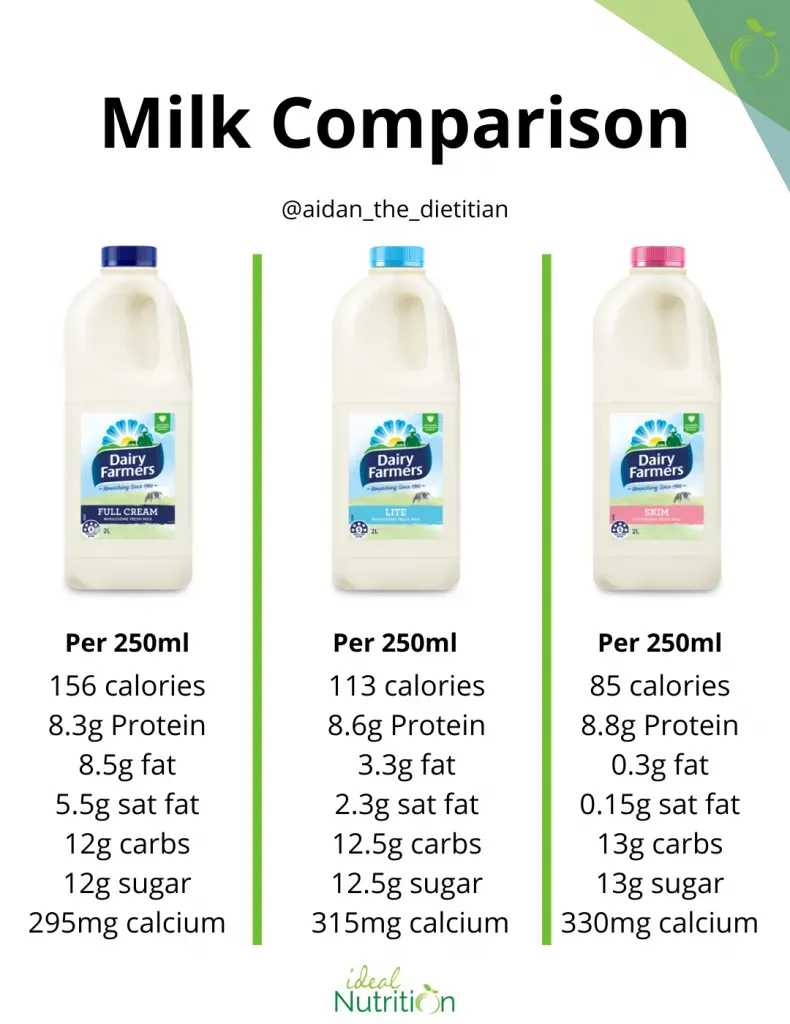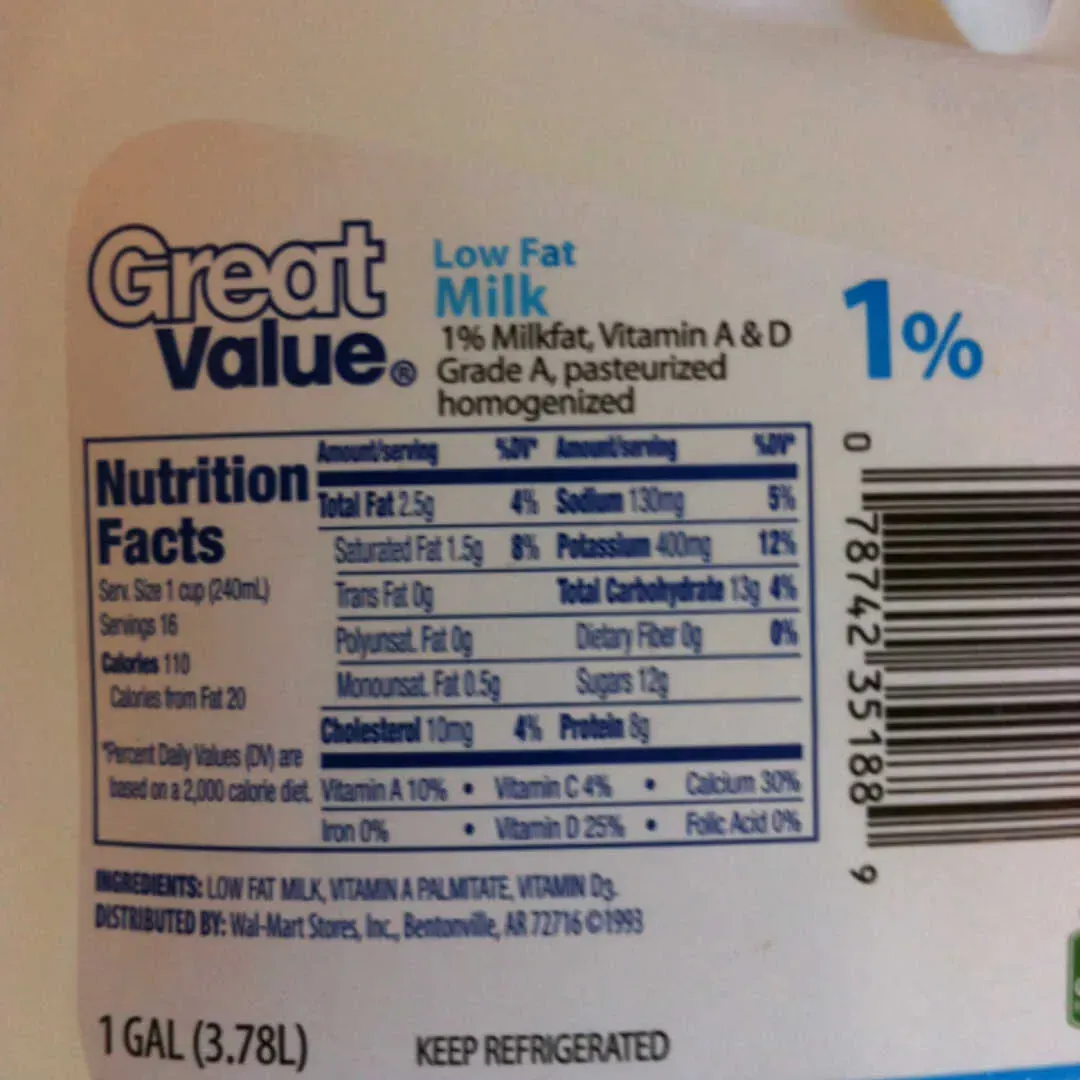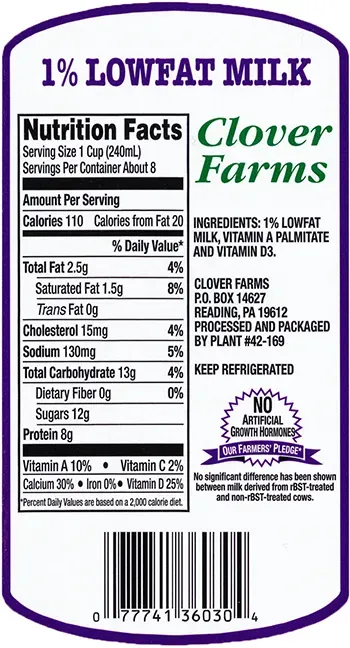Table of Contents
Walk down the dairy aisle these days and you're faced with a bewildering lineup. Whole milk, 2%, 1%, skim – it’s enough to make your head spin before you even check the labels. For decades, the standard advice was simple: less fat equals fewer calories, and fewer calories means better health, especially for your waistline. This pushed many towards options focusing on lower fat content, making the discussion around low fat milk calories a central point for anyone watching their intake.
Comparing Whole, LowFat, and Skim Milk Calories
Comparing Whole, LowFat, and Skim Milk Calories
The Basic Breakdown: Fat and Fuel
let's get right to the numbers that usually send people searching. When you look at whole milk, you're seeing the original package, roughly 3.25% milk fat. That fat adds up on the calorie front. An 8-ounce glass typically lands you around 150 calories. Now, flip that carton over to the low-fat version, often labeled 1%. Right there, you've cut the fat significantly, down to about 1 gram per serving. And guess what happens to the low fat milk calories? They drop. You're usually looking at about 100 calories for the same 8-ounce pour. It's a clear calorie difference driven by the fat content, plain and simple.
Skim Milk: Stripped Down Calories
Then there's skim milk, the leanest option in the bunch. This stuff has had almost all the fat removed, leaving less than 0.5% milk fat. With the fat largely gone, the calories take another dive. An 8-ounce serving of skim milk usually comes in around 80 calories. So, if your primary goal is to minimize calorie intake from milk, skim is the clear winner on paper. Comparing Whole, LowFat, and Skim Milk Calories shows a pretty linear relationship: less fat equals fewer calories. But as we'll see, that's only part of the story.
Milk Type (8 oz) | Approximate Fat (g) | Approximate Calories |
|---|---|---|
Whole Milk (3.25%) | 8 | 150 |
Low-Fat Milk (1%) | 2.5 | 100 |
Skim Milk (<0.5%) | <0.5 | 80 |
Beyond Low Fat Milk Calories: Fat Content and Nutrients
Beyond Low Fat Milk Calories: Fat Content and Nutrients
It's Not Just About How Much Fat, But What Kind
so we've established that low fat milk calories are lower because, well, there's less fat. Revolutionary, I know. But focusing *only* on the quantity misses the point entirely. The fat in milk isn't just inert blob adding calories; it contains different types of fatty acids. For years, saturated fat was the dietary boogeyman, blamed for everything short of bad hair days. Whole milk has more saturated fat than 1% or skim. This led to the widespread push for low-fat dairy. However, recent research throws some serious shade on that old thinking. The saturated fat in dairy, it turns out, might not have the same negative impact on heart health as saturated fat from other sources. Some studies even link full-fat dairy consumption to a *lower* risk of certain chronic diseases. So, stripping out the fat might mean stripping out compounds that aren't as bad as we thought, and maybe even some that are good.
Stripping Fat Strips Away Vitamins
Here’s where things get interesting beyond just the low fat milk calories count. Several crucial vitamins are fat-soluble. Think Vitamins A, D, E, and K. These guys need fat to be absorbed properly by your body, and they're naturally found *with* the fat in milk. When you remove the fat to make skim or low-fat milk, you're also removing a good chunk of these vitamins. While milk is often fortified with Vitamin A and D after processing (check the label!), the naturally occurring amounts of E and K are significantly reduced. So, yes, you saved a few calories by choosing low-fat, but did you lose out on some valuable micronutrients in the process? It's a trade-off worth considering.
Does getting fewer fat-soluble vitamins from your milk matter if it's fortified?
- Fortification helps replace A and D.
- Natural E and K are largely gone.
- Absorption of fortified vitamins might be better with some fat present.
Other Nutrients Stick Around (Mostly)
Now, let's look at the rest of the nutritional team in milk. The good news is that the major players like protein, calcium, phosphorus, and B vitamins (like riboflavin and B12) remain relatively consistent across whole, low-fat, and skim varieties. A glass of skim milk still packs the same protein punch and calcium dose as a glass of whole milk. This is why skim is often touted as nutrient-dense – you get a lot of essential vitamins and minerals for minimal calories and virtually no fat. So, while the fat content and associated fat-soluble vitamins change dramatically, the core building blocks like protein and calcium stick around, regardless of whether you choose whole, low-fat, or skim.
Low Fat Milk Calories and Your Health Goals
Low Fat Milk Calories and Your Health Goals
If Your Goal is Pure Calorie Cutting
Alright, let's talk brass tacks if your main gig is shedding some pounds and you're counting every single calorie like a hawk. This is where the appeal of low fat milk calories historically came in. Compared to whole milk, that 1% or skim option shaves off a decent chunk of calories per glass – 50 calories less for 1%, and a whopping 70 less for skim. Over a day, if you drink a couple of glasses, that difference starts to add up. On paper, it seems like a no-brainer: pick the lower calorie option, create a larger deficit, lose weight faster. It makes logical sense if you view calories as the sole determinant of weight change. For someone on a very strict, low-calorie regimen, those saved calories from choosing skim or low-fat can be significant.
Considering Satiety and Fat Absorption
But hold on a second. Dieting isn't just about numbers on a label; it's about how food makes you feel and how your body uses it. Fat, despite its caloric density, plays a role in satiety – that feeling of fullness that stops you from raiding the snack cabinet ten minutes after your meal. Whole milk, with its higher fat content, might keep you feeling satisfied for longer compared to a glass of watery skim milk. If drinking skim leaves you feeling hungry sooner, you might end up eating more calories overall later in the day, completely negating the initial saving on low fat milk calories. Plus, remember those fat-soluble vitamins we talked about? Your body absorbs them better when there's fat present. So, while fortified skim milk has Vitamin D added, you might not be getting the full benefit without some fat alongside it. It's a classic case of the simple calorie math not telling the whole metabolic story.
Think about your typical milk usage:
- Pouring a big glass to drink straight? Satiety might matter more.
- Adding a splash to coffee? The calorie difference is negligible, and satiety is irrelevant.
- Using it in cooking or baking? Fat content affects texture and flavor.
Beyond Weight: Nutrient Density and Other Goals
Now, if your health goals extend beyond just the number on the scale – maybe you're focused on overall nutrient intake, bone health, or even specific conditions – the picture changes again. While low fat milk calories are lower, whole milk contains more naturally occurring beneficial fatty acids, like those omega-3s mentioned earlier, and higher levels of fat-soluble vitamins (even if skim is fortified with A and D). Some emerging research even suggests that full-fat dairy consumption might be linked to a lower risk of metabolic syndrome and type 2 diabetes, which feels counter-intuitive but the data is starting to accumulate. If maximizing nutrient absorption and potentially benefiting from dairy fats is a priority, fixating solely on minimizing low fat milk calories might mean missing out on other upsides. It really boils down to what specific health outcome you're optimizing for.
Choosing Your Milk: Who Needs Low Fat Milk Calories?
Choosing Your Milk: Who Needs Low Fat Milk Calories?
When Cutting Every Calorie Counts
Look, for some people, minimizing calorie intake is the absolute top priority, maybe under strict medical guidance or for a very specific, short-term dietary goal. In these cases, saving 50 or 70 calories per serving by opting for low fat milk calories or skim milk isn't insignificant. If you're building a diet around severely restricted energy intake, every calorie decision matters. Think about someone recovering from surgery needing easily digestible nutrients with minimal energy cost, or perhaps an athlete in a specific cutting phase where every gram of macro and every calorie is meticulously tracked. For them, the pure numbers game favors the lower-fat options. It's not about what's inherently "better" in a vacuum, but what fits the immediate, precise need.
Considering Specific Health Conditions
While recent science is dialing back the universal fear of saturated fat, there are still medical conditions where limiting dietary fat, including saturated fat, is a necessary part of management. Individuals with certain malabsorption issues, specific gallbladder problems, or severe hypertriglyceridemia might receive clinical advice to minimize fat intake across the board. In these less common but important scenarios, choosing milk with fewer low fat milk calories and less overall fat isn't a dietary trend; it's a medical necessity. Always follow the guidance of your healthcare provider if you have a condition that requires specific dietary fat restrictions.
So, who *might* lean towards low-fat or skim?
- Individuals on very strict, medically supervised low-calorie diets.
- Those with specific health conditions requiring broad fat restriction.
- People who genuinely dislike the taste or texture of higher-fat milk.
The Personal Equation: It Depends on Everything Else
For the average person not under strict medical orders to limit fat, the choice isn't as black and white as "low fat equals healthy." Your overall diet matters far more than the few grams of fat difference between whole and 1% milk. Are you getting healthy fats from other sources like avocados, nuts, and fatty fish? Is this glass of milk part of a balanced meal, or is it the only source of dairy you'll have all day? If you're otherwise eating well and active, the slightly higher low fat milk calories and saturated fat in whole milk are unlikely to derail your health. Conversely, if your diet is generally poor, swapping to skim milk won't magically fix everything. The decision between whole, low-fat, or skim milk should be a small piece of your larger nutritional puzzle, not the whole picture. Consult with a registered dietitian or doctor to figure out what fits *your* unique needs and health landscape.
Making Your Milk Choice
So, after sifting through the numbers and the differing advice, what's the final word on low fat milk calories? It turns out the carton you pick isn't just about a single number. While low-fat and skim milk certainly offer fewer calories and less saturated fat upfront compared to whole milk, the story doesn't end there. Emerging research suggests that the fat in dairy might behave differently than fat from other sources, and the presence of other nutrients in whole milk could influence how your body processes it. For some, particularly those managing specific calorie restrictions or certain health conditions, lower-fat options remain a sensible choice. For others, the potential benefits linked to whole milk's fat content and associated nutrients might be worth considering. Ultimately, the "best" milk isn't a one-size-fits-all decree; it depends on your overall diet, your health status, and what actually works for your lifestyle. Don't just chase the lowest calorie count; look at the whole picture, and maybe have a chat with a professional if you're truly stuck.
